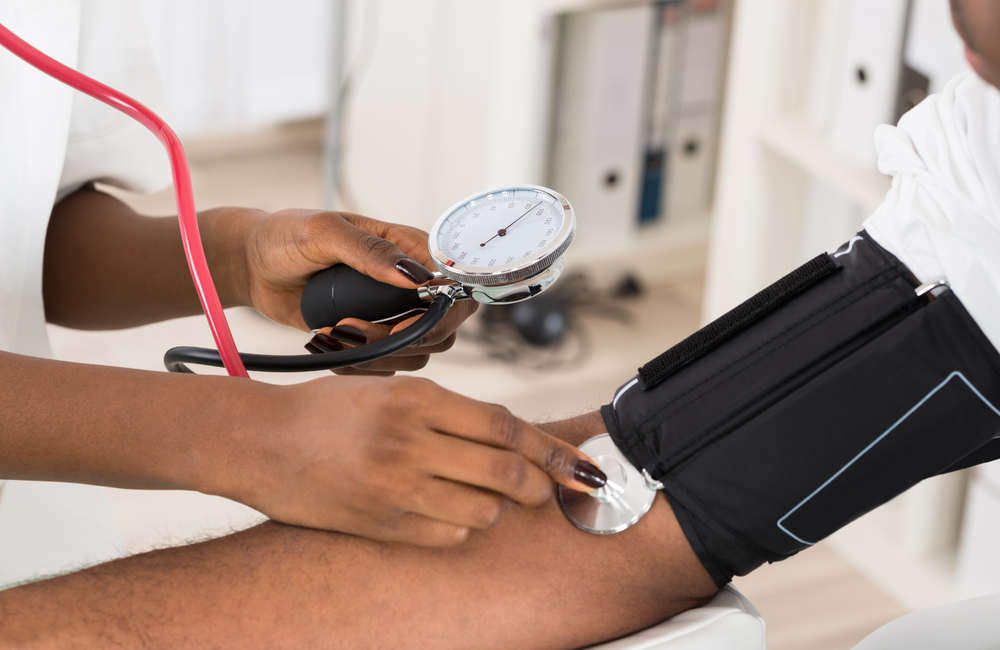
A quarter of people living with HIV have hypertension (high blood pressure), an international team of investigators report in the Journal of Hypertension. The researchers synthesised the results of 194 separate studies conducted between 2007 and 2017. The prevalence of hypertension was highest in North America and central and western Europe, but over half of people living with HIV and hypertension are in sub-Saharan Africa.
Hypertension is the leading factor in the development of cardiovascular disease and the authors describe its prevalence among people with HIV as “dreadful.” They call for the implementation of cost-effective strategies to screen, and where appropriate, treat HIV-positive people for hypertension.
“Curbing the burden of hypertension in this population requires efficient interventions against modifiable risk factors,” write the investigators. “The high hypertension prevalence we found in this study calls all HIV healthcare providers to pay more attention to this non-communicable disease to prevent the occurrence of cardiovascular events in people living with HIV.”
However, they emphasise that these interventions will need to be appropriate to the local prevalence of hypertension and the availability of healthcare resources.
Thanks to improvements in treatment and care, many people with HIV can now have an excellent life expectancy. The prevention and treatment of chronic diseases associated with ageing is now a priority of HIV care.
Cardiovascular disease is now a leading cause of serious illness and death in people with HIV. Its leading cause is hypertension, blood pressure above 140/90. The inflammation caused by HIV, the side effects of some anti-HIV drugs and lifestyle factors such as high rates of smoking mean that people with HIV may be especially vulnerable to the development of hypertension.
A previous synthesis – or meta-analysis – of studies published between 1996 and 2014 showed that 25% of people with HIV were hypertensive.
A team of investigators led by Dr Jean Joel Bigna of the Centre Pasteur, Cameroon wanted to take this research further. They decided to focus on studies conducted between 2007 and 2017. Global access to HIV treatment expanded massively over these years, more effective and less toxic anti-HIV drugs became available, and life expectancy improved.
Moreover, Dr Binga and colleagues wanted to determine both global and regional prevalence of hypertension and to see if rates differed according to setting (high vs lower resource countries) and also the use of antiretroviral therapy.
A database search identified 194 eligible studies. They included a total of 394,776 people living with HIV. Hypertension was defined as either blood pressure above 140/90, the use of hypertension treatments, or both.
Most of the studies (84) were conducted in Europe and North America, 42 were from eastern and southern Africa, 27 from Latin America and the Caribbean, 22 from Asia and the Pacific and 17 from west and central Africa. None of the studies were from the Middle East, north Africa, eastern Europe or central Asia.
Pooling the results showed that prevalence of hypertension among people with HIV was 24% globally.
“Curbing the burden of hypertension in this population requires efficient interventions against modifiable risk factors.”
Prevalence differed significantly between regions. It was highest in Europe and North America (28%), followed by west and central Africa (24%), Latin America and the Caribbean (22%), eastern and southern Africa (20%) and Asia and the Pacific (17%).
Prevalence was higher among people taking antiretroviral therapy compared to people who were not on treatment (27% vs 16%). Rates of hypertension were higher in studies conducted after 2011 (26% vs 20%), likely reflecting the expanded use of antiretrovirals.
The researchers estimated that 9 million people with HIV are living with hypertension and that 59% of these cases are in sub-Saharan Africa. They believe that the higher prevalence observed in Europe and North America is probably due to more widespread use of antiretrovirals in this region. Not only can some anti-HIV drugs cause increases in blood pressure, but treatment with them increases life expectancy, meaning that people are more likely to develop hypertension as part of the natural ageing process.
The authors note that in many cases hypertension in people with HIV is avoidable or modifiable. They emphasise the importance of addressing lifestyle factors to reduce the risk of hypertension, including reducing salt intake, stopping smoking, taking physical exercise and eating a diet rich in fruit and vegetables.
“We estimated that a quarter of people living with HIV had hypertension in the last 10 years,” emphasise the authors. They believe their findings support routine screening for hypertension for people with HIV living in wealthier countries.
In low-income countries, resources and cost-effectiveness need to be taken into account, they suggest. Clinics in sub-Saharan Africa often lack basic equipment for measuring blood pressure and supplies of blood pressure-lowering drugs are unreliable.
Bigna JJ et al. Global burden of hypertension among people living with HIV in the era of increased life expectancy: a systematic review and meta-analysis. Journal of Hypertension, published online ahead of print, 2020.
DOI: 10.1097/HJH.0000000000002446.
